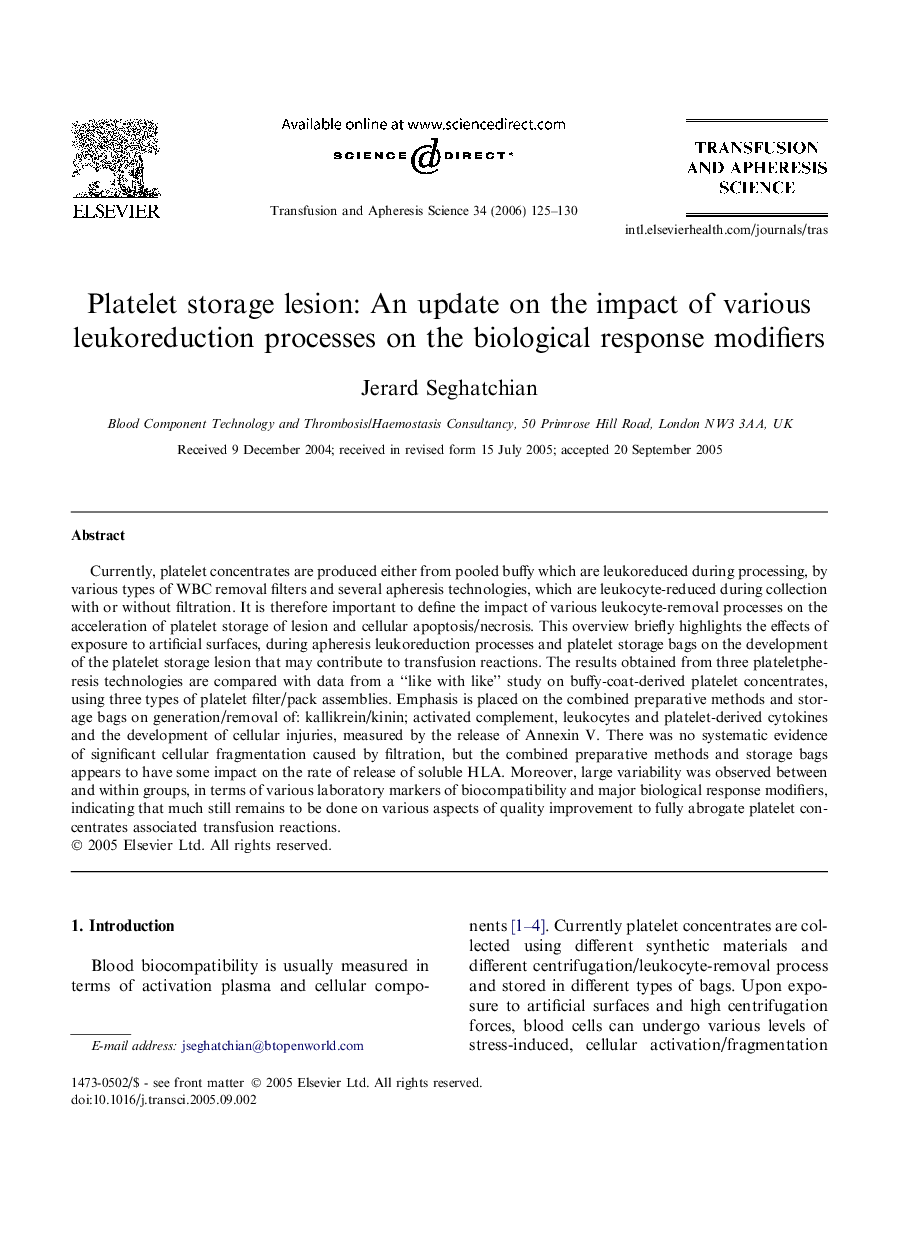| Article ID | Journal | Published Year | Pages | File Type |
|---|---|---|---|---|
| 3336365 | Transfusion and Apheresis Science | 2006 | 6 Pages |
Currently, platelet concentrates are produced either from pooled buffy which are leukoreduced during processing, by various types of WBC removal filters and several apheresis technologies, which are leukocyte-reduced during collection with or without filtration. It is therefore important to define the impact of various leukocyte-removal processes on the acceleration of platelet storage of lesion and cellular apoptosis/necrosis. This overview briefly highlights the effects of exposure to artificial surfaces, during apheresis leukoreduction processes and platelet storage bags on the development of the platelet storage lesion that may contribute to transfusion reactions. The results obtained from three plateletpheresis technologies are compared with data from a “like with like” study on buffy-coat-derived platelet concentrates, using three types of platelet filter/pack assemblies. Emphasis is placed on the combined preparative methods and storage bags on generation/removal of: kallikrein/kinin; activated complement, leukocytes and platelet-derived cytokines and the development of cellular injuries, measured by the release of Annexin V. There was no systematic evidence of significant cellular fragmentation caused by filtration, but the combined preparative methods and storage bags appears to have some impact on the rate of release of soluble HLA. Moreover, large variability was observed between and within groups, in terms of various laboratory markers of biocompatibility and major biological response modifiers, indicating that much still remains to be done on various aspects of quality improvement to fully abrogate platelet concentrates associated transfusion reactions.
